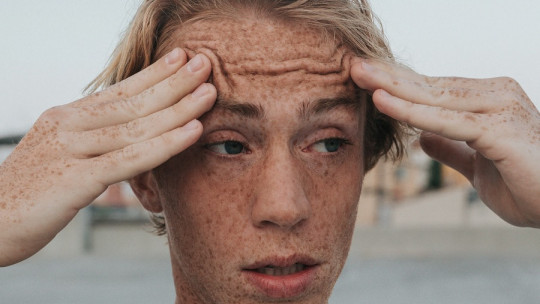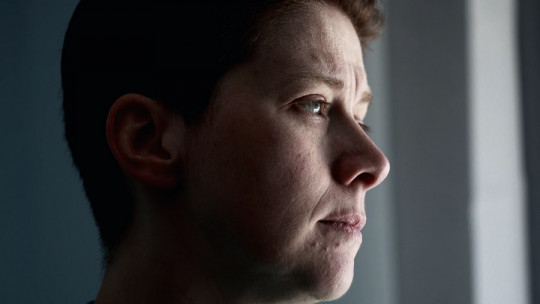Stress is a basic emotion for our survival. It activates fight or flight responses when these are necessary, especially in the face of events that are dangerous to our physical and psychological integrity.
However, sometimes, stress becomes a non-adaptive response, exaggerating the potential risks of a certain event and behaving in a very detrimental way for proper development and vital functioning.
Adaptive disorder refers to a diagnosis in which the person manifests problems adapting to the demands of their environment. Here we will see this concept in more depth and We will address the types of adaptive disorders that exist
Adaptive disorders, what are they?
According to the DSM-V (Diagnostic and Statistical Manual of Mental Disorders), adjustment disorders are defined as mental disorders that have a strong relationship with stress and the ability to successfully adapt to life events and inconveniences
The main activating factor of these disorders is the experience of stressful situations, or the high frequency of their appearance. That is, adaptive disorders do not develop without first appearing a condition that activates them, fundamentally stress.
In more concrete terms, these disorders are understood as maladaptive responses to continuous and/or severe stress, which negatively affect effective coping mechanisms to be able to carry out correct social functioning.
Generally, it causes significant and prolonged discomfort, in addition to changing the person’s way of being causing you to lose interest in aspects that you previously enjoyed, feeling sadness and anxiety, combined with a deep and continuous helplessness.
One of the explanations that have been given to understand the appearance of this type of disorder has to do with the natural mechanism of some people when they experience a particularly stressful situation. After experiencing a particularly worrying event, these individuals learn to pay more attention to the state of their body, interpreting any unpleasant physiological sensations as an indicator that something is going terribly wrong, which, in turn, generates higher levels of anxiety and depression. .
Symptoms
Although we are going to see the types of adjustment disorders and their main symptoms, it is worth mentioning their common symptoms first. These symptoms appear when the person is in a particularly difficult situation. These situations require the person to initiate a whole series of processes whose ultimate goal is to overcome them. Some examples of stressful life situations may be the loss of a loved one, the breakup of a romantic relationship, the stress of studies change city…
Among the main symptoms of adjustment disorders are having a low mood, with depressive symptoms, in addition to having ruminative and negative thoughts, such as excessive concern about how events will develop and the problem that has triggered the manifestation of the disorder.
You can also feel physical discomfort, which increases stress, acting as a cycle that feeds on itself Some of these are chest tightness and breathing problems. The person may have trouble falling asleep, insomnia, and problems concentrating.
Among dysfunctional thoughts we can find having low self-esteem, having a biased image of one’s own image, feelings of hopelessness, fear, feeling that there is no possible way out of the situation in which one finds oneself or difficulties in planning daily activities and carrying them out. , in addition to feeling alone.
Diagnosis
The diagnosis of adjustment disorders is based on the identification of important life factors that cause serious stress to the person, in addition to triggering the aforementioned symptoms.
In the DSM-5 it is considered that an adjustment disorder can be diagnosed if the person reports having manifested emotional or behavioral symptoms within three months immediately after experiencing a stressor in your life
Another key point in the diagnosis is that more stress is being suffered than would be expected in a person without psychopathology for the same unpleasant event, in addition to having too serious an impact on relationships, work, studies or other aspects of the person’s life. .
adjustment disorder will be diagnosed if the symptoms manifested, such as sadness or anxiety, are not due to any other mental disorder such as clinical depression or an anxiety disorder, nor is it due to experiencing normal grief.
Types of adjustment disorders
The DSM-5 lists six different types of adjustment disorders, depending on which symptoms take center stage. There are six types of adaptive disorders that can be found:
1. In a depressed mood
A low mood predominates, with the urge to cry or a feeling of hopelessness characteristic symptoms of clinical depression.
People diagnosed with this variety of adjustment disorder often experience feelings of sadness and hopelessness, as well as a lack of interest or loss of motivation in doing activities that were previously considered pleasurable.
2. With anxiety
Nervousness, anguish, worry, agitation predominate or separation anxiety.
A fairly characteristic symptom of this particular subtype is that the person can feel, very easily, overwhelmed by events. There are concentration and memory problems.
In the case of children, it is common to find symptoms of separation anxiety which are shown when you have to get away from your parents or loved ones, such as having to go to school, having a medical procedure…
3. With mixed anxiety and depressed mood
A combination of traits typical of depression and anxiety predominates.
4. With behavioral alteration
Behavioral alteration predominates, that is, the person engages in risky behaviors such as reckless driving or fighting
In adolescents, it is common that if there is an adjustment disorder with behavioral alterations, the young person will carry out acts of vandalism, in addition to being absent from school.
5. With mixed alteration of emotions or behavior
Emotional symptoms predominate, such as those of depression and anxiety, combined with the presence of behavioral alterations.
6. Unspecified
This subtype refers to the maladaptive reactions that cannot be completely classified into one of the specific subtypes of the same disorder
Problems occur in different spheres of the person that he considers important, such as his closest circle of friends, family, workplace or studies.
Types depending on their duration
The duration of symptoms of adjustment disorders is variable. This may be due to the patient’s own personality characteristics, their family support, or the fact that they are already attending therapy.
1. Acute
Symptoms last less than 6 months The problems that the person reports experiencing are alleviated when the stressor that triggered them is eliminated.
2. Persistent or chronic
The symptoms last more than six months, continuing for a long time and even becoming chronic. This type of adaptive disorders are especially worrying given that the degree of vital disruption is very high given that the more time the person spends suffering from the problems they complain about, the more damage they will do.
Treatment
In the psychotherapeutic approach, the most used current is cognitive-behavioral therapy , which is the treatment that has offered the best results and the one with the most scientific basis. The objectives of cognitive-behavioral therapy in adjustment disorders are:









